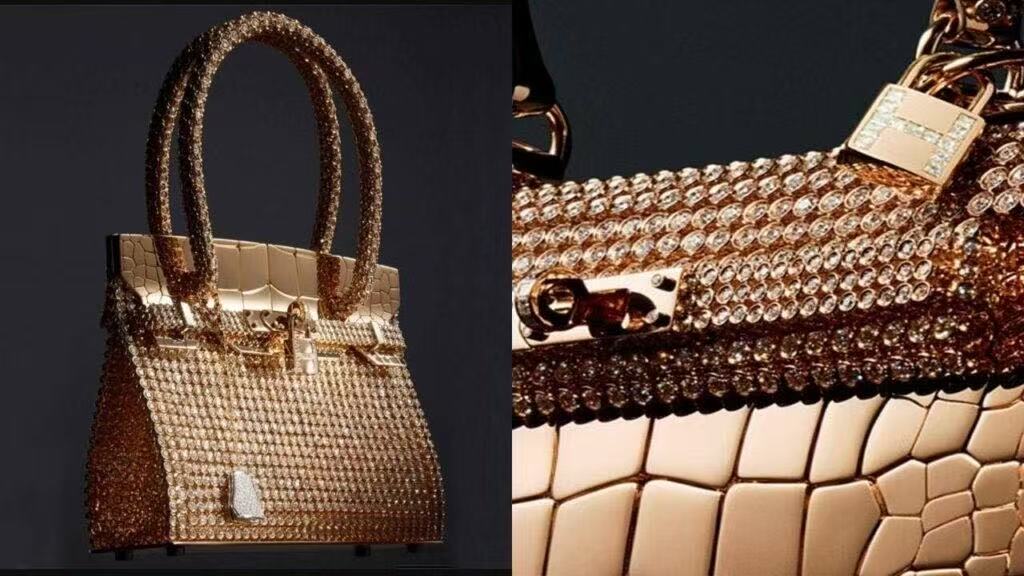What are you looking for?
Search
The Birkin Bag: From Airline Sketch to Cultural Icon
The Hermès Birkin bag has transcended its function as a mere accessory to become a cultural phenomenon and investment asset, representing the pinnacle of craftsmanship and desire. This article traces the remarkable journey of the Birkin from its origins to its current status as the ultimate luxury object.

The Chance Encounter That Started It All
The Birkin's origin story has achieved near-mythological status in fashion lore. In 1984, French actress and singer Jane Birkin found herself seated next to Jean-Louis Dumas, the then-CEO of Hermès, on a flight from Paris to London. As they conversed, Birkin expressed her frustration with finding a practical yet elegant weekend bag, reportedly sketching her ideal bag on a airline sickness bag. Dumas took this inspiration and transformed it into what would become the iconic Birkin bag.
The original Birkin created for Jane Birkin was crafted from black leather with gilded metal hardware. Its width matched what would become the 35cm Birkin, though its depth was closer to the 40cm model. This combination of practical size and elegant detailing established the template for what would become one of the most coveted objects in the world.
Evolution of Design: Maintaining Core Principles
While the Birkin has evolved since its introduction, its fundamental design elements remain remarkably consistent. The bag's core components include:
-
A pair of circular handles
-
A flap closure
-
Four base studs
-
A locking mechanism
These elements combine to create a bag that is both structurally sound and aesthetically balanced. Perhaps most remarkably, each Birkin continues to be crafted by a single artisan who oversees the entire process from leather cutting to final assembly, requiring at least 18 hours of skilled handiwork per bag
The Dimensions of Desire: Finding the Right Size
The Birkin family has expanded to include multiple sizes, each with its own appeal and practical considerations:
-
25cm Birkin: The smallest standard size, introduced in 2004, has become surprisingly the most sought-after version in recent years. Its compact dimensions (25cm wide × 20cm high × 13cm deep) make it perfect for evening wear or minimal daily essentials.
-
30cm Birkin: Offering more space while remaining manageable to carry, this size strikes a balance between practicality and proportion that many find ideal for daily use.
-
35cm Birkin: The original women's size that started it all, this version provides substantial capacity while maintaining elegance.
-
40cm Birkin: The largest standard size, originally designed to accommodate Jane Birkin's active lifestyle and need to carry multiple items.
The shift toward smaller bags, particularly the 25cm size, reflects changing lifestyle needs as smartphones have replaced many carried items. This size now commands approximately double the monthly search volume of the next most popular 30cm size
The Language of Leathers: From Togo to Exotic
Hermès offers the Birkin in an extensive range of leathers, each with distinct characteristics:
Standard Leather Options:
-
Togo: Grained calfskin with an irregular pattern, known for being scratch-resistant and relatively lightweight. This is one of the most popular choices for everyday use.
-
Clemence: Similar to Togo but softer and more prone to slouching over time, offering a more relaxed appearance.
-
Epsom: Pressed leather with a fine grain, remarkably durable and water-resistant while maintaining a structured silhouette.
-
Swift: Exceptionally soft and smooth leather that absorbs color beautifully, creating rich, saturated hues.
-
Box Calf: The original smooth leather used on early Birkins, developing a characteristic patina and veining over time.
Exotic Leather Hierarchy:
-
Ostrich: Recognizable by its quill follicles, surprisingly durable with a distinctive texture.
-
Lizard: Typically reserved for smaller bags like the 25cm Birkin, known for excellent color absorption.
-
Alligator/Crocodile: The pinnacle of exotic Birkin skins, with specific varieties including Porosus crocodile (most prestigious with visible pores) and Nile crocodile (uniform scales) These command the highest prices at retail and on the secondary market.
The popular Himalaya Birkin, crafted from Nile crocodile skin dyed in a white-to-gray gradient to resemble snow-covered Himalayan peaks, represents one of the most exclusive and expensive variations.
Understanding the Investment: Birkins as Assets
The Birkin's reputation as an investment piece is supported by remarkable statistics. Since its introduction in 1984 at approximately $2,000, prices have increased dramatically, with a 25cm Togo Birkin now retailing for around $12,100—when one can actually obtain one directly from Hermès.
The secondary market reveals even more striking valuations:
-
Classic leather 25cm Birkins typically range from $20,000 to $40,000
-
Neutral colors like black, gold, and etoupe command premium prices
-
Exotic skins range from $30,000 to over $75,000 for rare crocodile versions
-
Limited editions like the 2022 Picnic Birkin (woven wicker and Swift calfskin) retailed at approximately $24,000 but resell for $45,000-$65,000
Perhaps most tellingly, a 2005 metallic silver and bronze goatskin 25cm Birkin sold at Sotheby's Hong Kong in 2022 for $139,000, demonstrating the extraordinary potential for appreciation.
Conclusion: More Than a Bag
The Birkin's journey from airline sketch to cultural icon represents more than just the creation of a luxury handbag. It embodies the powerful combination of heritage craftsmanship, strategic scarcity, and mythological storytelling that continues to captivate collectors and fashion enthusiasts nearly four decades after its creation. As both a functional object and a store of value, the Birkin maintains its position not just as a handbag, but as a cultural touchstone whose story continues to evolve with each new generation of admirers.

